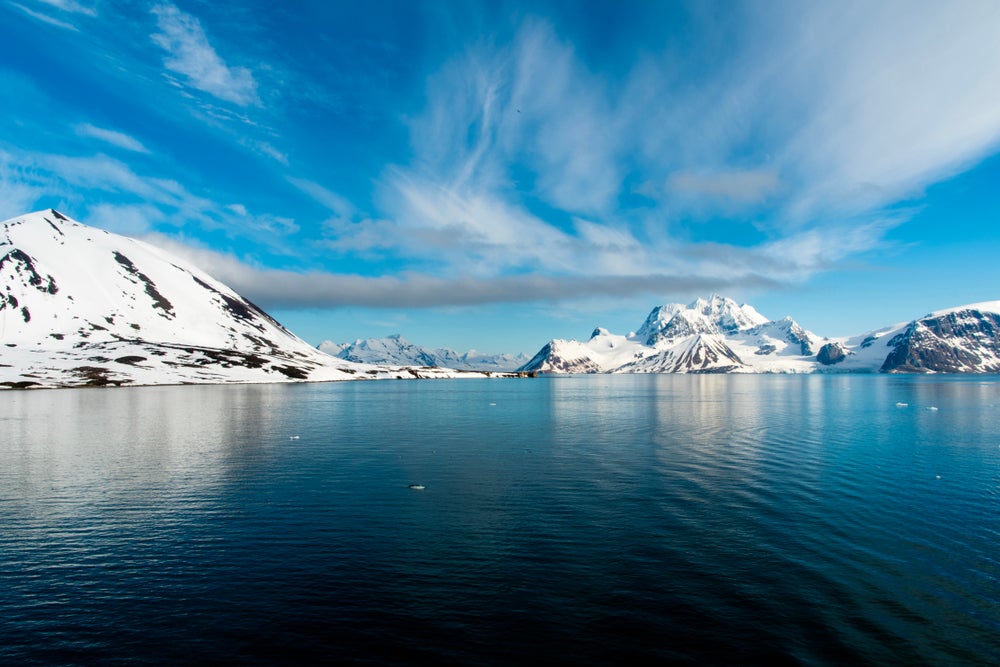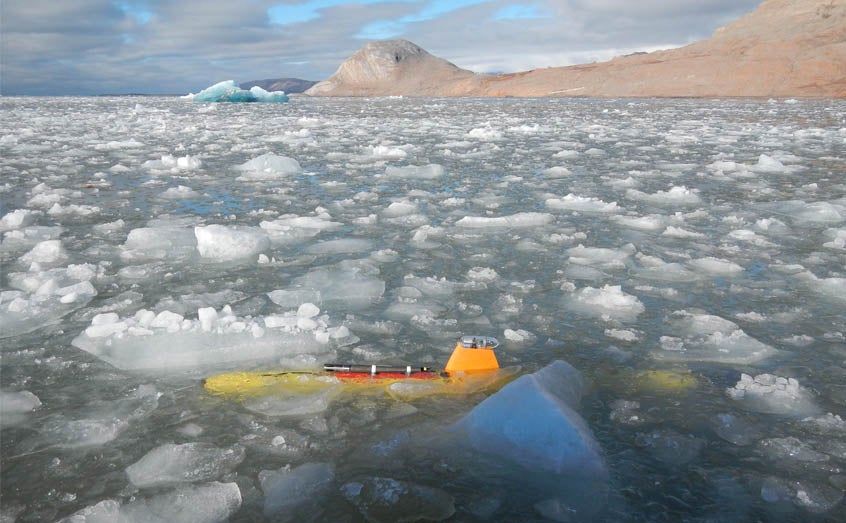
An autonomous submarine, known as an autonomous underwater vehicle, has been used by researchers to gain important insights into the melting of Norwegian glaciers.
Researchers at the Scottish Association for Marine Science used an autonomous underwater vehicle (AUV) to get close to the edge of four tidewater glaciers in Svalbard, a chain of Norwegian islands in the Arctic Ocean. Due to the risk of falling ice, and the large waves this causes, the mission was too dangerous for a manned ship to carry out the surveillance.
Researchers at SAMS have been studying the glaciers for two decades, and have used the autonomous underwater vehicle to further this research, which is funded by the Norwegian Research Council and led by the Norwegian Polar Institute.
Freya: The autonomous underwater vehicle inspecting glacier retreat
The AUV, named Freya, is able to travel through the water very close to the glaciers, and it captures photographs, sonar images and information such as temperature and salinity, helping researchers learn more about how the impact of climate change on glaciers is affecting sea beds, and the rate at which glaciers are retreating.
Using this data, along with satellite images, the researchers we able to calculate how fast the glaciers are retreating. Over the past ten years the Kronebreen and Kongsbreen glacier have been retreating by up to 300m a year, some of the fastest rates for glaciers in the region.

The AUV also observed in-situ subglacial meltwater plumes at two of the glaciers and evidence for warm Atlantic Water at the glacier face. These factors are known to accelerate the melting of glaciers below the surface.
How well do you really know your competitors?
Access the most comprehensive Company Profiles on the market, powered by GlobalData. Save hours of research. Gain competitive edge.

Thank you!
Your download email will arrive shortly
Not ready to buy yet? Download a free sample
We are confident about the unique quality of our Company Profiles. However, we want you to make the most beneficial decision for your business, so we offer a free sample that you can download by submitting the below form
By GlobalDataDr John Howe, lead author on the report, said:
“Findings from this study illustrate the results of a warming Arctic and reveal the seabed features below the retreating ice.
“The use of an AUV, a Teledyne Gavia named Freya, has enabled us to collect a number of different datasets at the same time, directly in front of the hazardous calving ice, something we would not have been able to do from a ship.”
Although the findings provide worrying evidence for the rapid rate of glacial melting, it also indicated how effective AUVs can be in monitoring and data collection, for which “vessel based observations are lacking”.
Dr Howe said researchers plan to use other autonomous vehicles in future work. This summer, SAMS scientists used AUVs and drones to capture how the mixing of Atlantic and Arctic sea water is affecting glacial calving, where large chunks of ice break off the glacier and fall into the sea.
Read More: Rising sea levels could cost the global economy $14tn a year by 2100.



